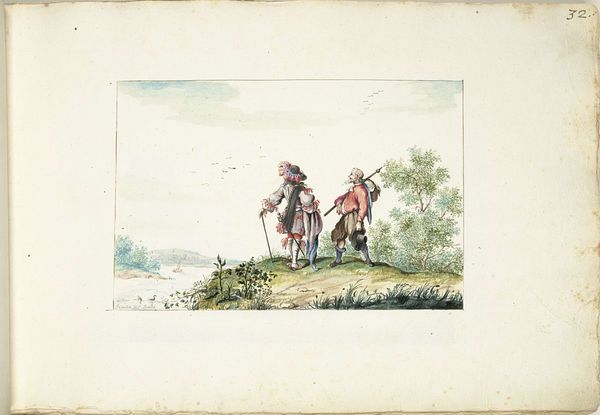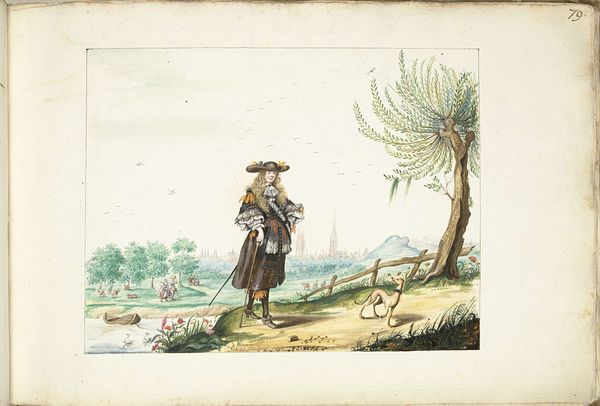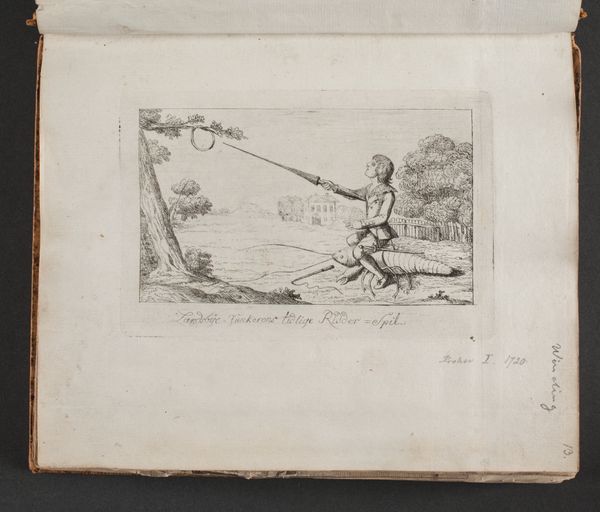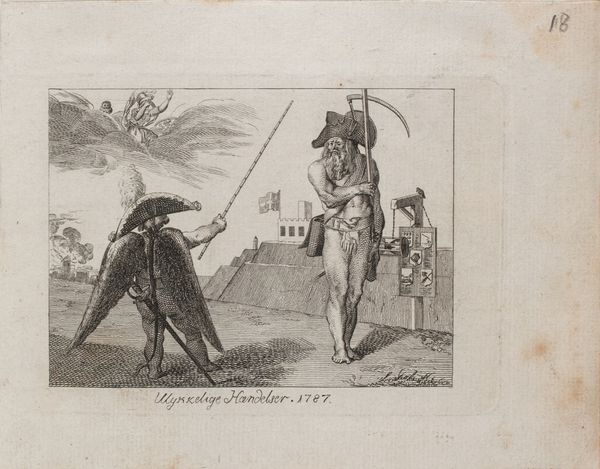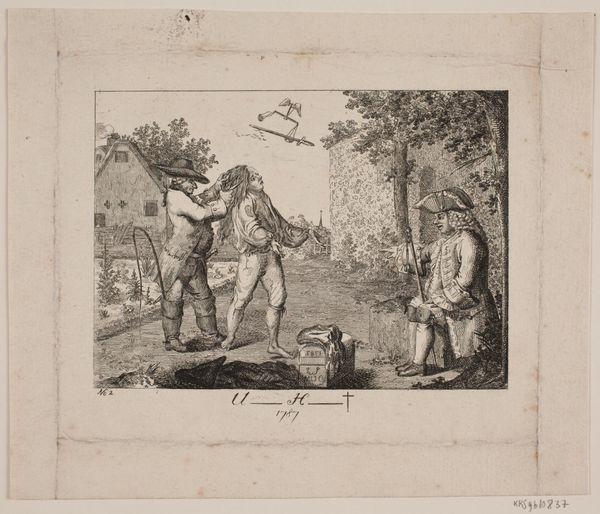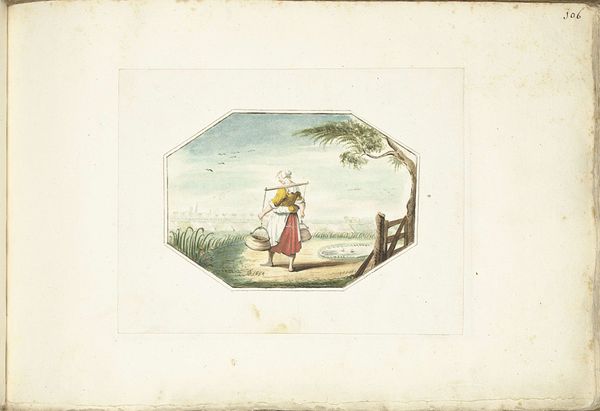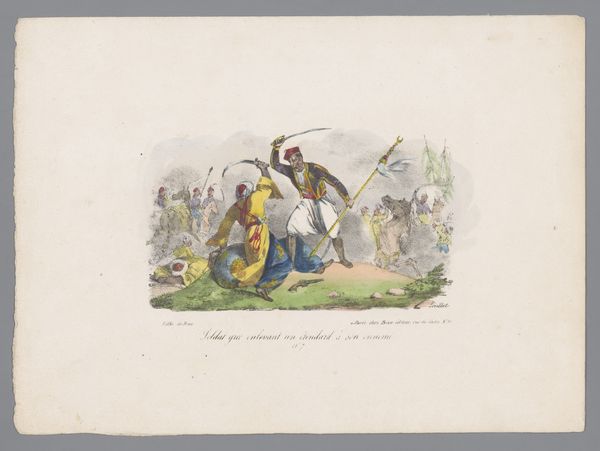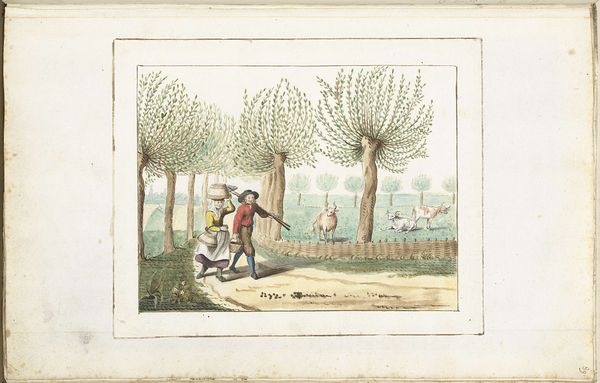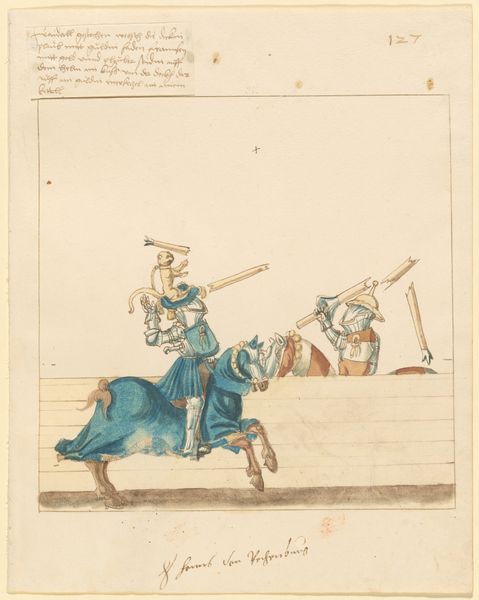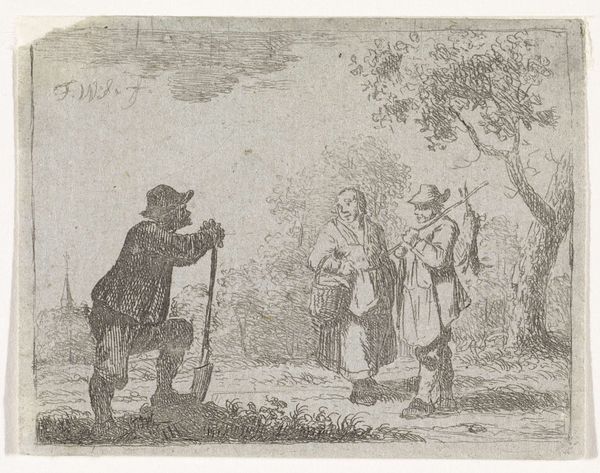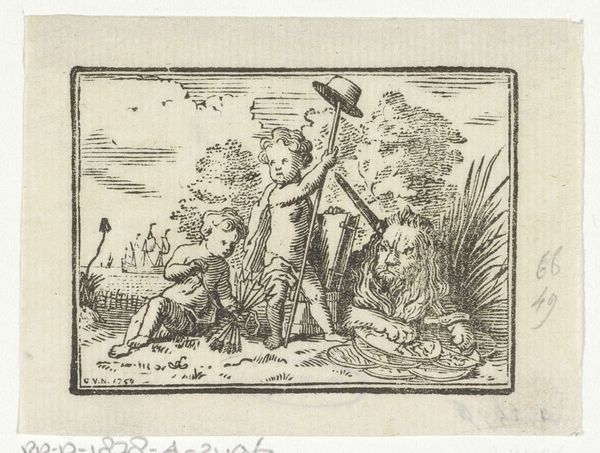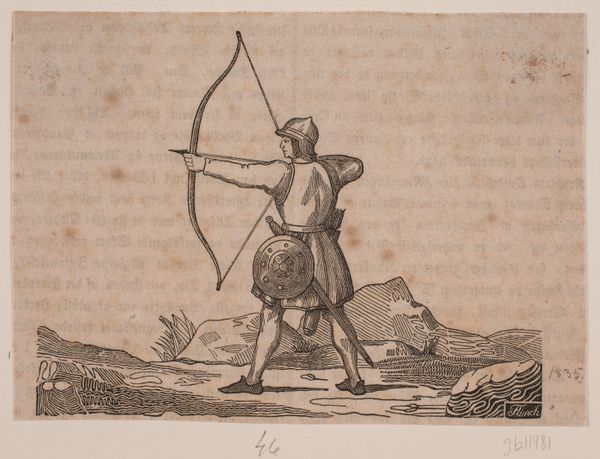
mixed-media, watercolor
#
mixed-media
#
water colours
#
narrative-art
#
dutch-golden-age
#
landscape
#
figuration
#
watercolor
#
coloured pencil
#
genre-painting
#
mixed media
#
watercolor
Dimensions: height 243 mm, width 360 mm
Copyright: Rijks Museum: Open Domain
Curator: It’s astonishing how vulnerability takes center stage in Gesina ter Borch’s mixed-media work from circa 1660 to 1687 titled “Oude blinde bedelaar geleid door een jongen," which translates to “Old blind beggar led by a boy." The Rijksmuseum holds this poignant piece. I see this landscape with such care... almost as if memory and perception intertwine like the delicate watercolors used. What strikes you? Editor: The worn, hand-me-down garments of the figures and their threadbare appearance suggest their socio-economic status as lower class, dependent on begging. Curator: Exactly, the very act of its creation is a story within a story. These watercolors, these colored pencils... each layer whispers of Ter Borch's own dedication to capturing this humble, daily transaction. What’s amazing to me is how she imbued them with dignity rather than pity. You sense it, right? The shared journey, the reliance on one another... Editor: I’d venture the materials themselves weren't expensive, certainly not luxury items, aligning with her portrayal of everyday life—using what's available to represent lives also dependent on mere availability. Curator: And there lies the essence of her quiet revolution, if you will. The choice of materials echoes the essence of those represented! But also think, even now, of the boy’s act – leading – its own kind of small resistance against helplessness! It feels both tender and strong, wouldn't you agree? Editor: Indeed. I notice the technique she used, layering watercolor upon watercolor and accenting them with strokes of colored pencil—a deliberate and likely laborious process reflecting the effort of everyday life itself, especially of those without financial security. The slow and meticulous nature underscores this reality of a lack of resources and, maybe a plea for compassion, through a certain reverence. Curator: Looking at “Oude blinde bedelaar geleid door een jongen", you witness not just a scene but a question. Ter Borch beckons us to reflect on empathy itself—our capacity for shared experience and the value of care and consideration that we choose to either give, or, withhold. Editor: It prompts us to consider our contemporary moment—who do we ignore or fail to assist, and why do we, collectively, tolerate or perpetuate their conditions?
Comments
No comments
Be the first to comment and join the conversation on the ultimate creative platform.
